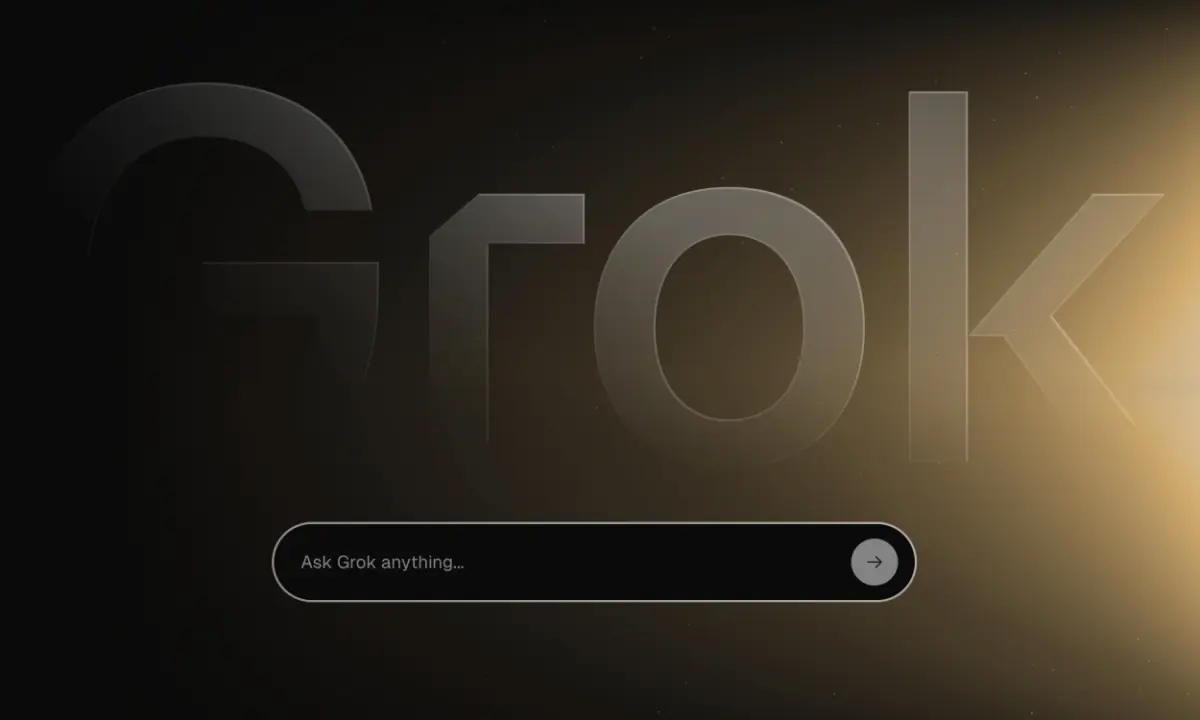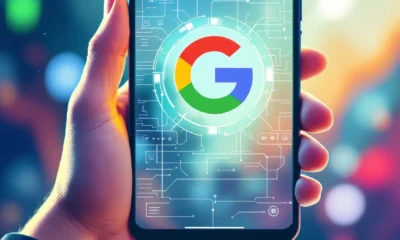News, Ethics & Drama
OpenAI Unveils GPT-4.5: A Focus on Conversational Nuance

OpenAI has pulled back the curtain on GPT-4.5, the latest iteration of its flagship large language model (LLM). The company is touting it as its most capable model yet for general conversation, representing what OpenAI research scientist Mia Glaese calls “a step forward for us.”
This release clarifies OpenAI’s recent strategy, which seems to involve two distinct product lines. Alongside its “reasoning models” (like the previously mentioned o1 and o3), GPT-4.5 continues what research scientist Nick Ryder refers to as “an installment in the classic GPT series” – models focused primarily on broad conversational ability rather than step-by-step problem-solving.
Users with a premium ChatGPT Pro subscription (currently $200/month) can access GPT-4.5 immediately, with a broader rollout planned for the following week.
Scaling Up: The Familiar OpenAI Playbook
OpenAI has long operated on the principle that bigger models yield better results. Despite recent industry chatter – including from OpenAI’s former chief scientist Ilya Sutskever – suggesting that simply scaling up might be hitting diminishing returns, the claims around GPT-4.5 seem to reaffirm OpenAI’s commitment to this approach.
Ryder explains the core idea: larger models can detect increasingly subtle patterns in the vast datasets they train on. Beyond basic syntax and facts, they begin to grasp nuances like emotional cues in language. “All of these subtle patterns that come through a human conversation—those are the bits that these larger and larger models will pick up on,” he notes.
“It has the ability to engage in warm, intuitive, natural, flowing conversations,” adds Glaese. “And we think that it has a stronger understanding of what users mean, especially when their expectations are more implicit, leading to nuanced and thoughtful responses.”
While OpenAI remains tight-lipped about the exact parameter count, they claim the leap in scale from GPT-4o to GPT-4.5 mirrors the jump from GPT-3.5 to GPT-4o. For context, GPT-4 was estimated by experts to potentially have around 1.8 trillion parameters. The training methodology reportedly builds on GPT-4o’s techniques, including human fine-tuning and reinforcement learning with human feedback (RLHF).
“We kind of know what the engine looks like at this point, and now it’s really about making it hum,” says Ryder, emphasizing scaling compute, data, and training efficiency as the primary drivers.
Performance: A Mixed Bag?
Compared to the step-by-step processing of reasoning models like o1 and o3, “classic” LLMs like GPT-4.5 generate responses more immediately. OpenAI highlights GPT-4.5’s strength as a generalist.
- On SimpleQA (an OpenAI general knowledge benchmark), GPT-4.5 scored 62.5%, significantly outperforming GPT-4o (38.6%) and o3-mini (15%).
- Crucially, OpenAI claims GPT-4.5 exhibits fewer “hallucinations” (made-up answers) on this test, fabricating responses 37.1% of the time versus 59.8% for GPT-4o and 80.3% for o3-mini.
However, the picture is nuanced:
- On more common LLM benchmarks like MMLU, GPT-4.5’s lead over previous OpenAI models is reportedly smaller.
- On standard science and math benchmarks, GPT-4.5 actually scores lower than the reasoning-focused o3-mini.
The Charm Offensive: Conversation is King?
Where GPT-4.5 seems engineered to shine is in its conversational abilities. OpenAI’s internal human testers reportedly preferred GPT-4.5 over GPT-4o for everyday chats, professional queries, and creative tasks like writing poetry. Ryder even notes its proficiency in generating ASCII art.
The difference lies in social nuance. For example, when told a user is having a rough time, GPT-4.5 might offer sympathy and ask if the user wants to talk or prefers a distraction. In contrast, GPT-4o might jump directly to offering solutions, potentially misreading the user’s immediate need.
Industry Skepticism and the Road Ahead
Despite the focus on conversational polish, OpenAI faces scrutiny. Waseem Alshikh, cofounder and CTO of enterprise LLM startup Writer, sees the emotional intelligence focus as valuable for niche uses but questions the overall impact.
“GPT-4.5 feels like a shiny new coat of paint on the same old car,” Alshikh remarks. “Throwing more compute and data at a model can make it sound smoother, but it’s not a game-changer.”
He raises concerns about the energy costs versus perceived benefits for average users, suggesting a pivot towards efficiency or specialized problem-solving might be more valuable than simply “supersizing the same recipe.” Alshikh speculates this might be an interim release: “GPT-4.5 is OpenAI phoning it in while they cook up something bigger behind closed doors.”
Indeed, CEO Sam Altman has previously indicated that GPT-4.5 might be the final release in the “classic” series, with GPT-5 planned as a hybrid model combining general LLM capabilities with advanced reasoning.
OpenAI, however, maintains faith in its scaling strategy. “Personally, I’m very optimistic about finding ways through those bottlenecks and continuing to scale,” Ryder states. “I think there’s something extremely profound and exciting about pattern-matching across all of human knowledge.”
Our Take
Alright, so OpenAI dropped GPT-4.5, and honestly? It’s kinda interesting what they’re doing here. Instead of just pushing for the absolute smartest AI on paper (like, acing math tests), they’ve gone all-in on making it… well, nicer to talk to. Think less robot, more smooth-talking, maybe even slightly empathetic chat buddy.
It definitely makes sense if they want regular folks to enjoy using ChatGPT more – making it feel natural could be huge for keeping people hooked. But let’s be real, it also stirs up that whole debate: is just making these things bigger and bigger really the best move anymore? Especially when you think about the crazy energy costs and the fact that, okay, maybe your average user won’t notice that much difference in day-to-day stuff.
Some critics are already saying this feels like OpenAI is just polishing the chrome while the real next-gen stuff (hello, GPT-5 hybrid?) is still cooking. Like, is this amazing conversational skill worth the squeeze, or is it just a placeholder? It definitely throws a spotlight on that big question in AI right now: do we want AI that can chat like a human, or AI that can crunch complex problems like a genius? And which one actually moves the needle for us? Kinda makes you wonder where things are really headed…
What do you think?
This story was originally featured on MIT Technology Review.

News, Ethics & Drama
Fraser Institute Study: History Suggests AI Will Create Jobs, Not Destroy Them

Worried about artificial intelligence leading to mass unemployment? A recent study from the Fraser Institute suggests looking back at history might ease those fears. The Canadian think-tank argues that AI, much like transformative technologies before it (think printing press, steam engine, computers), will ultimately reshape the economy in positive ways, boosting living standards and likely leading to a net *increase* in jobs.
The study, authored by senior fellow Steven Globerman, pushes back against calls for strict AI regulation aimed at protecting workers. It highlights that the adoption of major “General Purpose Technologies” historically unfolds slowly, often over decades. This gradual pace gives businesses and workers crucial time to adapt to the changing landscape.
While AI will undoubtedly reduce demand for certain jobs and skills, the study emphasizes that it will simultaneously fuel the growth of new industries and roles directly linked to AI. These new opportunities will require different skills, complementing the technology rather than being replaced by it.
Globerman concludes that if past technological revolutions are any guide, the overall impact of AI should be an expansion of job opportunities and higher wages, despite the disruption to specific occupations.
Our Take
It’s always interesting to see the “AI will create jobs vs. AI will kill jobs” debate framed historically. The Fraser Institute makes a solid point – big tech shifts often *do* create new kinds of work eventually. It’s easy to focus on the jobs AI might replace, but harder to imagine the ones that don’t even exist yet.
Still, the transition period can be rough for people whose skills become less needed. Saying it’ll likely be okay “in the long run” doesn’t help someone facing displacement *now*. Balancing the potential long-term gains with the real short-term disruption is the tricky part regulators and society need to figure out.
This story was originally featured on Kingsville Times.
Engines & LLMs
Google Makes Gemini AI Assistant Free for Android Users

Google is making a significant push to integrate its Gemini AI directly into the Android experience, announcing that the Gemini app – positioned as an advanced AI assistant – is now free for all compatible Android users. This move essentially offers users an alternative, and potentially a replacement, for the traditional Google Assistant.
Previously, accessing the full capabilities of Gemini often required specific subscriptions or was limited in scope. Now, by downloading the dedicated Gemini app or opting in through Google Assistant, users can leverage Gemini’s conversational AI power for a wide range of tasks directly on their phones, at no extra cost.
What Does This Mean for Android Users?
Bringing Gemini to the forefront on Android allows users to tap into more sophisticated AI features. This includes tasks like generating text, summarizing information, brainstorming ideas, creating images (on supported devices), and getting help with context from their screen content. It represents a shift towards a more powerful, generative AI-driven assistant experience compared to the more command-focused Google Assistant.
Users can typically activate Gemini using the same methods previously used for Google Assistant, such as long-pressing the power button or using the “Hey Google” voice command (after enabling Gemini).
Google’s Strategy: AI Everywhere
Making Gemini freely available on Android is a clear strategic move by Google to embed its AI deeply within its mobile ecosystem. It aims to get users accustomed to Gemini’s capabilities, driving adoption and competing directly with other AI assistants and integrations, particularly Apple’s Siri and potential future advancements.
While Google Assistant isn’t disappearing entirely (it still handles some core smart home and routine functions better for now), this push positions Gemini as the future of AI assistance on Android devices.
Our Take
So Google’s basically putting Gemini front-and-center on Android for free now. This feels like them saying, “Okay, AI is the future, let’s get everyone using *our* AI assistant.” It makes sense – get users hooked on Gemini’s smarter features instead of just sticking with the old Google Assistant.
It’s a big play to keep Android competitive, especially with whatever Apple’s cooking up with Siri. Making it free removes the barrier, aiming for mass adoption. While the classic Assistant might still handle some stuff better for now, it’s pretty clear Google sees Gemini as the main event going forward on mobile.
This story was originally featured on Digital Trends.
News, Ethics & Drama
Grok Gets a Memory: xAI Chatbot Remembers Past Conversations

Get ready for more personalized chats with Grok! Elon Musk’s xAI is rolling out a new “Memory” feature for its AI chatbot, aiming to make interactions smoother and more context-aware. This move brings Grok’s capabilities closer to competitors like OpenAI’s ChatGPT, which introduced a similar memory function earlier.
The core idea behind Grok Memory is simple: the chatbot will now remember details and preferences from your previous conversations. This allows Grok to build upon past interactions, avoiding the need for users to constantly repeat information or context. For example, if you’ve previously mentioned your coding preferences or dietary restrictions, Grok should recall these details in future chats.
How Grok Memory Works
According to xAI, the feature is designed to improve the helpfulness and flow of conversations over time. As you chat more with Grok, its memory will evolve, tailoring responses more specifically to your needs and history. This could lead to more efficient problem-solving, better recommendations, and a generally less repetitive user experience.
Importantly, xAI emphasizes user control over this feature. Users will reportedly be able to view what Grok remembers, delete specific memories, or turn the entire Memory feature off if they prefer not to use it. This addresses potential privacy concerns often associated with AI systems retaining user data.
Catching Up in the AI Race
The introduction of Memory positions Grok more competitively against other leading AI chatbots. Remembering context is becoming a standard expectation for sophisticated AI assistants, and this update helps xAI keep pace. The feature is reportedly rolling out gradually to Grok users.
Our Take
So Grok is finally getting a memory, letting it remember stuff from past chats. Makes sense – it’s kinda table stakes now if you want to compete with ChatGPT. No one likes repeating themselves to an AI, so this should make using Grok feel less like starting from scratch every single time.
Giving users control to see, delete, or turn off the memory is definitely the right call, hitting those privacy concerns head-on. Still, it shows how crucial personalization (and the data that fuels it) is becoming in the AI chatbot game. It’s all about making these tools feel less like generic bots and more like assistants that actually know you.
This story was originally featured on Beebom.
-

 Prompted Pixels2 weeks ago
Prompted Pixels2 weeks agoCute Severance Action Figures
-

 News, Ethics & Drama2 weeks ago
News, Ethics & Drama2 weeks agoSo, Why’s OpenAI Suddenly Sharing? It’s Not Just About the Competition
-

 News, Ethics & Drama2 weeks ago
News, Ethics & Drama2 weeks agoGemini 2.5 Pro Goes Free: Google’s AI Game-Changer Unleashed
-

 News, Ethics & Drama2 weeks ago
News, Ethics & Drama2 weeks agoElon Musk’s xAI Acquires X: The Future of AI and Social Media Collide
-

 News, Ethics & Drama2 weeks ago
News, Ethics & Drama2 weeks agoSurveys Say Students Are Hooked on AI, But Learning’s Taking a Hit
-

 Writing2 weeks ago
Writing2 weeks agoSudowrite Review (2025): Can It Match Human Writing?
-

 Video Vibes2 weeks ago
Video Vibes2 weeks agoSurreal Cityscape – SORA Video by Jesse Koivukoski
-

 News, Ethics & Drama2 weeks ago
News, Ethics & Drama2 weeks agoNaNoWriMo Shuts Down Amid Financial Woes and Community Controversies























